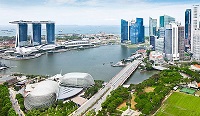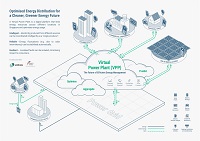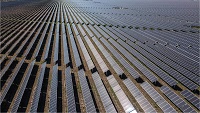For more information, please refer to:
Media Releases
14 Dec 2011
An uncertain energy future demands bold change in policy direction
- The International Energy Agency (IEA), in its recently-launched 2011 edition of the World Energy Outlook (WEO), indicated that without a bold change in policy direction, the world risks locking itself into an insecure, inefficient and high-carbon energy system. Dr Fatih Birol, Chief Economist of IEA, outlined this and the latest trends and developments in the global energy landscape, at the World Energy Outlook (WEO) 2011 lecture in Singapore. Dr Birol oversees the WEO, IEA's flagship publication.
- Said Dr Birol: "The good news from Durban was that all of the biggest emitters signed up to develop a binding agreement to cut emissions. But as they iron out the details of the plan, countries must also push ahead with practical action to avoid being locked into a high-carbon energy system, particularly in Asia where rising incomes and population will inevitably push energy needs higher."
- He added that the energy world has become more inter-connected, while Asia has become the centre of global energy markets. Referring to the WEO's central New Policies Scenario, he highlighted that primary energy demand will increase by one-third between 2010 and 2035, with 90 percent of the growth from non-OECD economies. China has recently bypassed the US to become the world's largest energy consumer and will consume 70 percent more energy than the US by 2035, although per capita demand in China will still be less than half of the US by then.
- Shedding light on Asia's power sector, Dr Birol told the 200-plus audience that nuclear generation is expected to grow by about 70 percent in 2035, led by China, India and South Korea. However, he cautioned that increased uncertainty surrounding nuclear power brought about by the Fukushima reactor crisis could be a wild card affecting the IEA's projections. While any possible slowdown in the use of nuclear power would give a further boost to renewables, it would also increase the cost of energy imports, reduce diversity of the fuel mix and make it harder and more expensive to mitigate the effects of climate change.
- The lecture highlighted that trends on both the demand and supply sides are set to maintain pressure on oil prices over the longer-term. Oil demand will see an increase from 87 million barrels per day (mb/d) in 2010 to 99mb/d in 2035, with the net growth coming from the transport sector in emerging economies. Some 90 percent of the aggregate production increase comes from the Middle East and North Africa region. Dr Birol, however, cautioned that should investment in the key MENA region run one-third lower than the US$100 billion per year required between 2011 and 2015, consumers could face a near-term rise in the oil price to US$150/barrel.
- The use of coal, which met almost half of the increase in global energy demand over the last decade, is expected to rise by 24 percent in 2035. Prospects for coal are especially sensitive to energy policies, notably in regions like China which today accounts for almost half of global demand.
- Natural gas continues to grow its importance in the energy pie, underscoring key findings of a recent WEO Special Report on the "Golden Age of Gas". In the New Policies Scenario, global gas demand will increase to 4.75tcm in 2035, at an average rate of 1.7 percent per year. Non-OECD countries will account for 81 percent of the growth. An anticipated major expansion of gas use in China will push domestic demand above 500bcm by 2035, up from 110bcm in 2010.
- Dr Birol stressed the valuable role that Singapore is set to play in LNG trading. "With its strategic location and long history as a leading oil trading centre, Singapore is now well placed to serve as a key LNG hub. This would give a boost to market flexibility and transparency and help reduce Asia's long-standing reliance on oil indexation for gas contracts."
- Based on IEA's projections, cumulative CO2 emissions over the next 25 years will amount to three-quarters of the total from the past 110 years, and put the world on track for a long-term average temperature rise of 3.5°C. China's per-capita emissions will match the OECD average by 2035. "There is still some limited time to change course and meet the international goal of limiting the long-term increase to 2°C. However, each year, the necessary measures get progressively tougher and more expensive," Dr Birol added.
- This is the fourth year that EMA and IEA are co-hosting the World Energy Outlook lecture in Singapore. This year's session was moderated by Dr Tilak K. Doshi, Principal Fellow and Head of the Energy Economics Division of the Energy Studies Institute (ESI).















